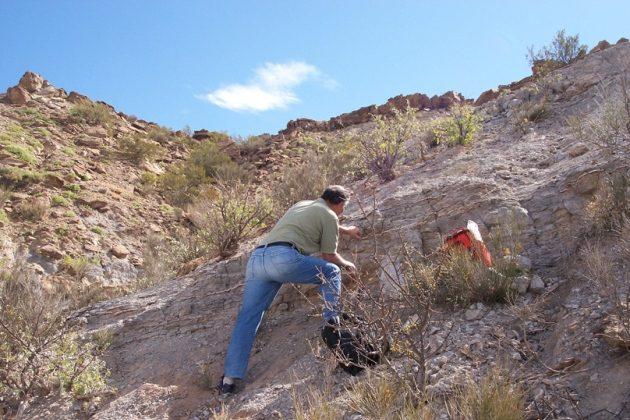A new study has found that dinosaurs roamed the Earth between 5 and 10 million years earlier than previously believed.
Scientists from Argentina, Brazil, California, and the Natural History Museum of Utah found that the first dinosaurs were roaming around between 234 and 236 million years old during the Late Triassic Period. That’s 5 to 10 million years younger than the previous estimate, according to the announcement of the findings.
“To discover that these early dinosaur relatives were geologically much younger than previously thought was totally unexpected,” said Randall Irmis, associate professor and curator of paleontology.
The results were garnered by employing radioactive isotope measurements to date zircon crystals found in the sediments of the Chañares Formation.

The formation is an approximately 250-foot (75-meter) thick geologic formation, featuring sediments deposited by rivers, streams, and lakes during the time period in present day northwestern Argentina.
Among the sediment lies numerous fossil specimens of dinosauromorphs, which scientists believe dinosaurs evolved from.
“In other basins, dinosaur precursors, early dinosaurs and faunas dominated by dinosaurs do not all conveniently exist in the same place. In the basin containing the Chañares Formation, you can follow hundreds of meters of sediments back through time. Because of this, the margin of error is very narrow because you can see the complete history all in one basin,” said Claudia Marsicano from the University of Buenos Aires.
Claudia was the lead author of the research published recently in the Proceedings of the National Academy of Sciences.
The team says its results call into question the timelines of a variety of other fossil-bearing formations around the world that are currently thought to be from the Middle Triassic Period.
“The new Late Triassic age for the Chañares Formation may hold true for the Santa Maria Formation in southern Brazil, which shares the same fossil species as the Chañares Formation, and the Karoo sequence in South Africa, to name a few,” the scientists said.
“It reinforces that there’s still a lot to figure out,” Irmis added to Nature Magazine. “That’s the really exciting part.”





